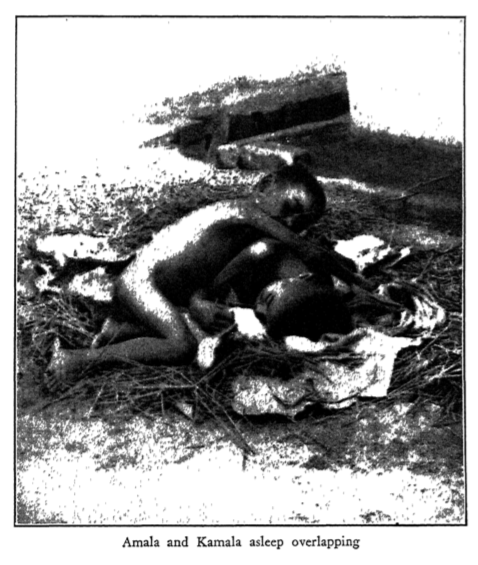Physics was one of the first sciences which helped develop the modern “scientific method”. One of the processes in the scientific method involves controlling of variables during an experiment. Performing an experiment in this manner one can possibly find the effect of the independent variable on a dependent variable. In this manner, we are supposed to find out if there is any causal link/correlation between the variables. This method was seen as a hallmark of true science and was widely adopted while discovering and developing new other disciplines.
Now in the case of psychology and behavioural sciences, we have a long-running debate regarding the effects of nature and nurture on human growth and development. By nature here it is meant our genetic make-up, while by nurture it is meant the environment (both physical and social) around us. For long people have tried to establish the link between nature/nurture and various aspects of human growth and development. This dichotomy has a deeper connection to the nature of knowledge and learning, which in turn in related to the two basic schools of philosophy: empiricism and rationalism. In the extreme forms, put very crudely, empiricism proposes that we can gain knowledge through our sense organs only, while rationalism proposes that we make sense of the world in our mind only. For example, in The Matrix the machines have developed a simulation which makes the human mind “experience” the world only in the mind. When Morpheus asks Neo
What is real? How do you define ‘real’? If you’re talking about what you can feel, what you can smell, what you can taste and see, then ‘real’ is simply electrical signals interpreted by your brain.
Here Morpheus is actually subscribing to the rationalist school as he denies that our sense organs are the primary source of our knowledge. In The Matrix the brain is simulated and it doesn’t know it is being simulated. How can we ever know? This is exemplified further by many Gedanken experiments which have been brought out by psychologists and philosophers. The Brain in a Vat is an example of such experiments.
On the other hand, the other extreme form of human development from empiricists would be considering humans a tabula rasa. In this perspective, the human brain is not born with any innate capabilities. And it is the experience with the physical world through the sense organs makes us understand the world. Thus, in this case, the environment is the factor on which our growth and development occur.
Now coming back to nature vs nurture debate, whether people believe in either depends strongly on the orientation and grounding people have regarding how the society works. We will see what is the basis both philosophical, epistemological and political when people subscribe to these viewpoints. First some thoughts on what exactly we mean by human growth and development in this context. We all see human babies grow from infants who are incapable of talking, understanding, even walking for that matter to being adults in a society who can talk, understand and do a variety of other things which infant versions of ours are not capable. How does this change occur, over let’s say a span of 15-20 years or so? Are we predestined by our genes to develop in a particular way, or does our immediate environment play a fundamental and crucial role in making this happen? What is the nature of learning and what is it dependent upon? Physical growth can be perhaps linked to the unfolding of the genetic predispositions that we have. For example, physical maturity occurs with age. Piaget has given us evidence on the basis of the so-called Piagetian tasks that thinking also matures with age and is a universal phenomenon across cultures.
But what happens to our thinking or our behaviours are they too natural and will occur even if we are not in contact with the society? People have thought over this question for a long time. We will discuss the evidence that people over the last 200 years or so have put up in support of each side, which is related to the title of the post.
In general, there are two groups who subscribe to the primacy of nurture in human development. The first group is of the people who are usually are influenced by Marxism and have a left orientation tend to favour nurture more than the nature aspect. According to them the social environment, including the socio-economic status of the family influence the way in which humans develop and learn. For this school of thought, the genetic composition (nature) of the individual has little or no effect on the way the individual develops or learns. This is in line with the central tenets of Marxism, in which capital plays a fundamental role in the way society works. The construct of cultural capital is a good way to understand how this group, in general, thinks about the effects of society and societal factors on human growth and development.
The other school which subscribes to the primacy of nurture in human learning and development is behaviourism. The behaviourists, very strongly influenced by logical positivists, and playing along with the zeitgeist gave credence in psychological studies to only things that could be observed. This was linked to the deep debates in the philosophy of science of the 1930s which was dominated by the logical positivists. The basic idea was that if anything is not observable directly by our sense experience like human thinking, it should not be considered scientific. This led to an entire programme which was very influential during the 30s-50s in which studying higher order thinking skills were banished from scientific enterprise. The definition of learning in case of behaviourists was seen in terms of behaviour. And according to them, the behaviour could be controlled by operant conditioning hence effectively we could control learning by providing required stimulus in the environment.
Bringing in the metaphor of a blank slate, people with this leaning would say all individuals are of equal potential, given a chance and environment anyone can perform anything. This was one of the basic assumptions of behaviourism. In Marxist sociological perspective, the metaphor of the blank slate allowed individuals to transcend the class that they were born in and to achieve their true potential irrespective of the social status of their parents. The quote below summarises this viewpoint very well:
Give me a dozen healthy infants, well-formed, and my own specified world to bring them up in and I’ll guarantee to take any one at random and train him to become any type of specialist I might select – doctor, lawyer, artist, merchant-chief and, yes, even beggar-man and thief, regardless of his talents, penchants, tendencies, abilities, vocations, and race of his ancestors. I am going beyond my facts and I admit it, but so have the advocates of the contrary and they have been doing it for many thousands of years.
From – Behaviorism by J. B. Watson, 1930, pp. 82.
Now let us look at the other group which takes the genetic makeup of ours as the most influential aspect for development and learning. In this perspective, your genes determine everything. There is no scope for anyone to do anything which the genes do not permit. Sometimes this is termed as genetic determinism. According to this view, the potential for learning and development is completely determined by genes. Unless one has a particular genotype, one by definition, is not capable of doing certain things. Now, of course, we do inherit our biological and physical structures from our parents. Physical characteristics like hair and eye colour, skin colour, size are inherited from our parents. So are tendencies for certain diseases like diabetes and others. Now the question that is interesting is this heritance limited to only physical characteristics or it can be used for determining other factors like intelligence, learning and development also?
In general, the people who are conservatives, leaning towards the right favour this point of view. This is because it provides a sort of legitimacy to the existing social order. The people who are in positions of power are there because they have better genes or are from a better stock. This also implies that nothing can be done to improve this situation as nature is unmutable. Of course, this position has racial, class gender, and caste overtones. Such an argument can be used to effectively defend and justify any existing social order. Sometimes, this entire range of ideas is put under the notion of Social Darwinism. Analogies from the natural world like artificial selection and breeding for producing better breeds (of plants and animals) are used to justify such a worldview. The movie GATTACA shows an example of a dystopian future is a good example of how a society where your genes are the only factors to determine your worth. In such a world, what matters is what your genes are, and not your skills.
Now apart from the philosophical, sociological and cultural aspects do we have any “scientific evidence” for deciding which factors are more influential. There have been many studies which claim a very strong evidence (mostly observational) regarding either worldviews. But none of the experiments or studies are seen to be conclusive. Critics on the other side point to experimental issues with data, samples, statistics, assumptions and personal beliefs and so on. Let us ask ourselves this question:
Can we design any critical experiments which will decide once and for all whether nature is important or nurture?
Ideally, the experimental design should be such that we should be able to control for nature and nurture. Now how would such an “ideal” experiment be designed? Let us look at each of the two variables. To control for nature we can take individuals from different genetic stocks and give them similar treatment. This way we will know from the differences in the outcomes/performance of the individuals and accordingly in their genes too. Now the question arises if we take adult individuals from different genetic stocks, they are already “contaminated” via the various nurture aspects of growing up. For example, they might have a different value system, a different language, different learning experiences, different social norms, different environments and so on. So ideally an “uncontaminated” sample should be with us.
How do we create an uncontaminated sample of human beings? Who are not touched by any aspect of nurture or environment? Ideally, we take don’t allow nurture to touch the newborn infants in any manner. That is to take them away from their mothers right after they were born. Oh! What a horror!! But such a thing would never be done in practice now. Though in the ancient times there were many who actually performed similar “experiments“. There are serious moral and ethical issues involved. Now strict research guidelines are in place whenever human subjects are involved in research studies. This came to force when evidence emerged post-World-War II which involved experimenting on human subjects by treating them like animals. That is basically not valuing human life and dignity. Hence I had put “ideal” in quotes.
In Rudyard Kipling’s The Jungle Book the protagonist Mowgli, is raised by the wolves. Although fictional, this story presents us with an interesting case study. Mowgli, who has been raised by the wolves, is not human in the sense of how we identify with the society. He identifies himself as a wolf and behaves like one. But then this is fictional story and a Mowgli is a fictional character. Now if we could find such an individual like Mowgli, we could perhaps test many of the basic questions regarding aspects of nature and nurture. One such opportunity came to us in an episode which is the title of this post: The Wolf-Children of Midnapore.
Now it so happened that in 1920s a rector Joseph Amrito Lal Singh in an orphanage in the town of Midnapore in Bengal, India reportedly found two girls in a wolf den. They were named Amala and Kamala. The discovery of these two girls was seen as a major event. The rector apparently maintained details notes about their discover and behavior in his diary. So much so, it was published into a book Wolf-Children and Feral Man J.A.L. Singh and Robert M. Zingg published in 1942. The discovery was also reported in a reputed journal as Scientific American (Vol. 164, No. 3 (MARCH · 1941), pp. 135-137).

So what did the rector observe in these two children? Can it resolve any fundamental questions regarding the nature-nurture debate? The book and the entries in the diary of Rev. Singh make many such attempts. However, it so happened that people raised serious doubts about the authenticity of the story, and further analysis has shown that it was a hoax. Recently, there was a case in which a girl was discovered living with monkeys. Again, girl showed some feral characteristics, but according to some reports nothing conclusive could be said.
So our basic question regarding nature/nurture remains unanswered. Perhaps due to moral and ethical concerns we may never be able to answer question on “experiments” such as these. But there have been other ways, surveys, studies and experiments which do indicate the complex ways in which nature and nurture do interact to produce the social human animal. But what cases like these show is that there is so much that is still to be discovered in the respect of nature/nurture debate. Perhaps we will be able to resolve these issues at some point.
http://www.midnapore.in/wolf-children-of-midnapore/wolf-children-of-midnapore14.html









